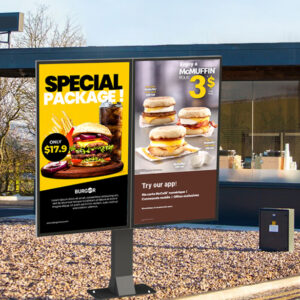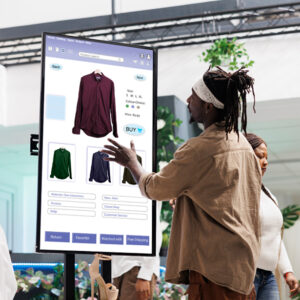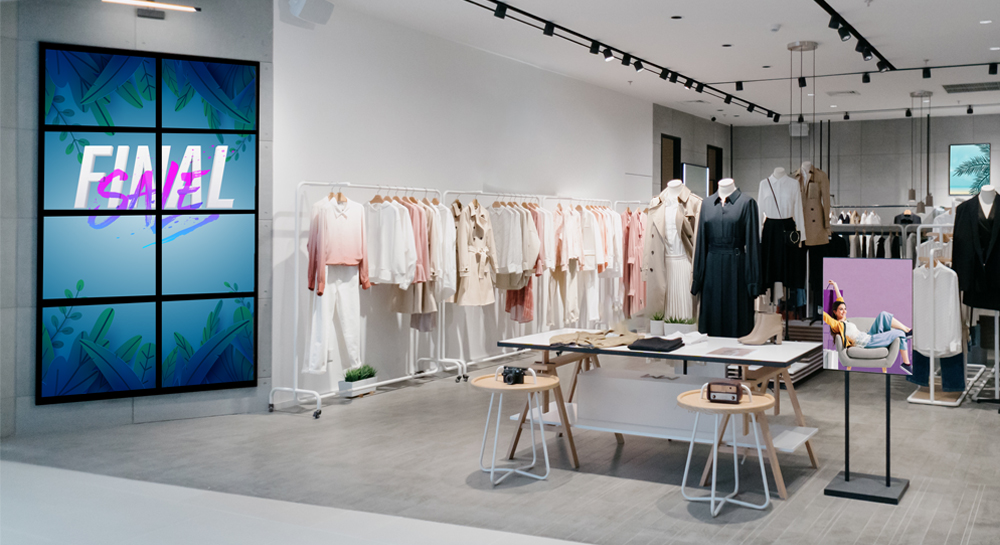Video Wall and Floor-standing Display
In today’s retail world, competition is fierce, and retailers need to use every tool at their disposal to stand out from the crowd. One way to do this is by using digital signage to improve retail advertising.
Digital signage has revolutionized the way retailers communicate with customers. Instead of static posters and displays, digital signage allows retailers to use dynamic, engaging, and interactive content to promote their products and services.
Here’s some examples of digital signage for retail businesses:
Digital Menu Boards – One of the most popular types of digital signage in retail settings is digital menu boards. These boards are replacing traditional menu boards in restaurants, cafes, and other food service businesses. Digital menu boards allow businesses to update their menus in real-time and display high-quality images of their food and drinks. This helps to entice customers and increase sales.

Way-finding Displays – Another type of digital signage that is becoming more popular in retail settings is wayfinding displays. Wayfinding displays provide customers with easy-to-follow directions around the store. This is particularly useful in large stores where customers can easily get lost. By providing clear and concise directions, retailers can improve the shopping experience for their customers and increase the likelihood of them making a purchase.
Promotional Digital Signage – In addition to digital menu boards and wayfinding displays, retailers are also using digital signage to promote their products and services. For example, retailers can use video walls to display high-quality videos and images of their products. This is particularly useful for retailers who want to showcase their products in action, such as fashion retailers showcasing a fashion show or electronics retailers showcasing the features of a new smartphone.
Digital signage can also be used to display real-time promotions and offers. For example, a retailer could use digital signage to display a limited-time offer, such as a discount on a particular product or service. This can help to create a sense of urgency among customers and increase sales.
Interactive Displays – Finally, retailers can use digital signage to improve the overall shopping experience for their customers. For example, retailers can use interactive displays to provide customers with product information, reviews, and recommendations. This helps to create a more personalized shopping experience and can help to increase customer loyalty.

In conclusion, digital signage is a powerful tool for retailers looking to improve their advertising and increase sales. By using digital menu boards, wayfinding displays, video walls, and other types of digital signage, retailers can create engaging and interactive experiences for their customers, increase brand awareness, and ultimately, boost their bottom line.

